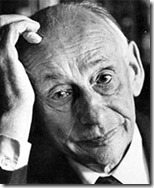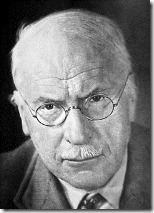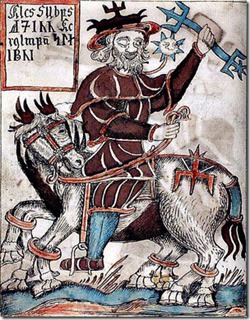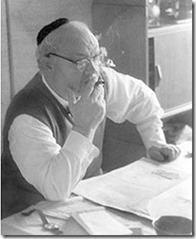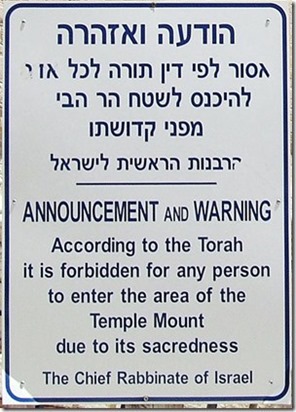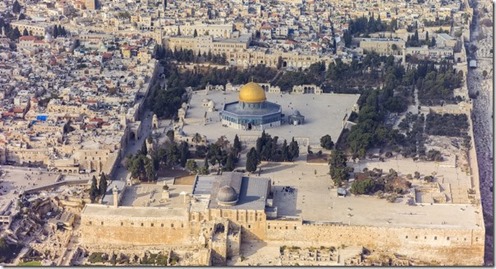The key to understanding what happened here in the last few days, mainly the last one, before the Israely elections last week, is identity. That’s the word, that’s what counts. In these elections, questions of identity took on additional meaning, and they are what in the end decided the matter, in a dramatic way. Personally, I’m ashamed to say that I didn’t see it coming, and I was also wrong in thinking that the aversion and weariness of a major section of the public with Netanyahu (on the right as well as the left) offered a real chance of changing the government. I was wrong, because I didn’t understand the depth to which the politics of identity penetrates Israel today.
For a start, let’s take the obvious example: Mizrachi (Sephardic) thinkers, artists and political activists who voted for Shas did so only out of identity awareness. The slogan “Mizrachi votes for Mizrachi” says it all. Even if they wanted to promote a socialist worldview, it was subordinate to the most important thing, which is tribal empowerment. That’s how we got secular Israelis, bohemians, and feminist activists who voted for a party that’s resolutely religious, populist, and patriarchal. In general, it was not the values of the party that appealed to them, but the promise to represent/preserve/promote a certain identity.
Bayit Yehudi (Jewish Home), which claimed to represent a new pan-Israeliness, also based its campaign on the identity element. The excellent slogan “No apologies” that they chose played on two levels of identity: the ethnocentric right in general, fed up with the seeming hegemony of the cosmopolitan left (“the old elites,” etc.), and the religious-Zionist public, which bears decades-old feelings of inferiority toward the secular public. Naftali Bennet promised these sectors a strong stance and empowerment of their identity (religious/Jewish), and he succeeded in attracting many. His campaign hit a reef with the Ohana affair, and began to sink when his party failed to adapt its approach – you can’t keep screaming “No apologies” when in fact, you’re apologizing. All the air went out of the balloon.
Ethnocentric Wave
These two examples are just individual instances of a much larger trend. Although it wasn’t imperceptible, pollsters and analysts failed to identify its influence, particularly in the last few days of the campaign. At the center of this trend stands neither Mizrachi identity nor religious-Zionist identity, but Jewish identity, plain and simple. This isn’t Judaism as a religion or as a culture, but Judaism as an ethnicity, or ethnic nationalism.
Netanyahu won this election not because he is beloved by the majority of the nation, and not because the ideology that his party upholds (without the courtesy of a written platform) is preferred by the majority of the nation – at least not in any comprehensive, rational manner. Netanyahu won because he promised his voters that he would protect them from the forces threatening not just their existence, but their Judaism.
This is an old story, and there’s no point in expanding on it. Let’s just say that Netanyahu, from the beginning of his career, identified a weak point in the Israeli left, and that is the connection to Jewish identity – more complex in the best of cases, weaker in the worst case. His whispered comment in 1999 to Rabbi Kadouri that “the left has forgotten what it means to be Jewish” is a verbal expression of the perception that the Israeli left is less connected to its religious and national roots, not to mention its geographical ones. Thus the left is prepared to relinquish such elements, while the right grasps onto them firmly.
This view has a robust basis. The left has significantly and historically served as the bastion of universal values, and while a nationalist left certainly does exist, identification with particularist values (national, religious, and ethnic) is the beating heart of the right. As the desire for particularist identity is strengthened, this electoral weak point of the left is revealed.
I have already written in various articles that since the nineties, Israel has been experiencing a growing wave of ethnocentrism. This is hardly a sensational revelation, but relies on studies and conclusions that my betters have reached in the past. Here is a comprehensive article of mine on this issue that was published recently. This ethnocentric wave satisfies the demand for identity that has arisen with the spread of cultural colonialism accompanying American capitalism (although the desire for distinct identity needs no real reason to awaken).
Until a short time ago, Naftali Bennet rode this wave of Jewish-ethnocentric identity with great success, and it is what enabled him to reach 17 mandates in the polls early on in the campaign, and even to dream of the prime minister’s post. Netanyahu also rode this wave of Jewish-ethnocentric identity, but in his case, it was not enough to overcome the aversion felt toward him by very large sections of the people.
The Turning Point in the Elections
That was the situation until the week before the elections. When the final polls were released, beginning that Tuesday, they showed that not only was the Likud trailing the Zionist Union, but that the Joint (Arab) List has become the third-largest party. Then the recognition began to spread that change was a real possibility, and that the left had a good chance of winning. The statement by Yair Garbuz about a “small minotiry” involved in “kissing mezuzahs and visiting holy grave sites”, and particularly the effect of a large Arab party on public awareness, aroused fear for the safety of the Jewish identity of “Israel.” Ron Gerlitz wrote in the past that paradoxically, the violence this summer against Arab-Israelis stemmed from their increasingly successful integration into Israeli public affairs. The same happened here: the sudden visibility of Israeli Arabs, the awareness that they were actually playing the democratic game, and successfully, was conceived as a threat to the Jewish identity of the state (Uri Waltman defined the issue in a short Facebook status).
Netanyahu correctly identified this fear, and transformed it into momentum for his campaign. He repeatedly threatened that in the current situation, the Likud would lose its majority to “the left and the Arabs.” Likud headquarters spread word of a left-bloc government supported by the Joint List. The image of Ahmed Tibi began to appear in between Herzog and Livni in Likud adverts. Netanyahu repeated the message with religious fervor, and for an overwhelming public, the smoke-signals in the sky spelled out danger to the Jewish identity of the state. The climax was reached on the afternoon of election day, when he made the announcement (on video, in writing, and he also wanted to broadcast it at a press conference) that “Arab voters are coming out in droves to the polls. Left-wing organizations are busing them out.”
That was enough to change the picture from one end to another. Within a short time, the Likud added ten mandates of Jewish Israelis who feared for the Jewish identity of Israel, who were convinced that only Netanyahu and only a strong Likud could protect it.
In these elections, Netanyahu had a big problem, and from this aspect, the journalists and pollsters who identified it were right. The reason he visited Mahane Yehuda without the media was not because he expected to be greeted with cheers of enthusiasm. The reason he put on an interview blitz of pleading and threats was not because he was sure of victory. The reason he told people around him that he had a serious problem was not just because he felt like pressuring them. Mainly, the reason he was forced to turn to the right, all the way to the right, to Kahane’s right, was because victory was not in the bag. Netanyahu achieved this victory only in the last hundred yards of the race, and in that sense, the polls reflected reality. He succeeded in turning the trend around by 180 degrees when he used the threat against the Jewish identity of the state in order to attract voters.
What the Left Can Do
As said, the left suffers from a structural weakness when approaching questions of identity. Yesterday Ofer Zalzberg published an excellent post on his view of the reasons for the Zionist Union’s failure. Writes Zalzberg:
Its strategy also failed because the Zionist Union didn’t succeed – nor did it even try – to present a vision for confronting the issues of Jewish identity in the State of Israel. It focused on Israeliness and Zionism, but it didn’t pay enough attention to Judaism. There are many voters in the Israel of 2015 for whom this is the main issue. Those who supported the socio-economic agenda that Herzog proposed could not switch to the Zionist Union, as they lacked a clear sense that they could trust it with educating their children to be Jews – that they could trust him with the historical challenge of ensuring Jewish continuity in Israel.
Actually, Herzog’s family roots could have served as excellent raw material to create such a feeling, but his party didn’t even make an attempt in that direction. The fact that the Zionist Union includes not one representative of knitted-kipa (national religious) public also doesn’t help, to put it mildly. Until true attention, out of true willingness, is paid to the issue of Jewish identity, the Zionist left will always start from a position of weakness. Until the left is able to supply identity – Jewish, Israeli – with distinct emotional baggage, it will not be able to attract the majority of Israelis who want such an identity, who demand it.
When the Mapai was around, the Labor movement of the past was able to present a solid Jewish identity. Ben Gurion with his love for the Tanach, raising the banner of Jewish history and Jewish nationalism, the republican-collectivist understanding of “the nation” and state – all these, despite their very negative aspects, enabled a significant number to identify with the party. Possibly, Labor’s ongoing correction of the failures of these positions has led to an overly sharp retreat from identification with their positive values.
So what now? It’s not enough to visit the Western Wall minutes before the elections. First, the Zionist Union has to change its perception, to understand that Jewish identity is important (really important, not just tactically – see below). In addition, they must work to add representatives of the kipa-wearing sector to the party. Yair Lapid was well aware of this, and added Shai Peron as his second-in-command and Ruth Calderon as representative of another form of Jewish identity, for which he is still reaping rewards today. The Zionist Union has to talk about “Judaism”. Of course, “Judaism” can be very liberal and very democratic, in terms of the biblical concepts of “love the stranger,” “you shall have one law for yourselves, what applies to the stranger applies to the citizen,” “you shall not follow many to pervert justice.” But they have to talk about it. The party chairman must be a figure with a visible connection to the issue. As mentioned, this could have been quite easy with Herzog, but it didn’t happen. And voters have a clear preference for a leader of Mizrachi origin, for obvious reasons.
Left-wingers who believe that the solution to their camp’s predicament is to join ranks with the Arab citizens of Israel are wrong. Not from an ethical point of view, because of course an emphasis on equal citizenship, on cooperation among all citizens and on rejection of discrimination based on ethnicity, is logical and appropriate from a liberal democratic point of view. But unless there is a change of consciousness of Marxist proportions among the Israeli people, the majority of the public will continue to think along ethnic, not class lines. To be clear: for most of the Jewish public in Israel, Jewish identity – theirs, their children’s, and that of the State of Israel – is a fundamental, central, and irreplaceable component in any worldview or aspiration for the future. It is a mistake to continue to deny this.
Meretz’s Problem
I’ve written about adding to the list representatives of the kipa-wearing public, but we have to realize that this is not really an issue of representation, but rather of image. So the talk about Meretz, for example, as unable to reach broad sectors because it has no representative of that population is pure nonsense. First of all, Meretz is the party with the most variety of ethnicity and gender in its first ten slots. Second, voters aren’t looking for representation. They’re looking for identity – and so the complaints about Meretz will never cease. This is something Meretz isn’t giving them, and maybe can’t give them.
In this regard, Meretz has a serious problem. This party, to which I gave my own vote, has promoted the values of preserving and advancing individual and civil rights. They have a clear platform of promoting universal rights. Not national, and not ethnic. In other words, it’s not only that Meretz doesn’t promote distinct identity, it dismantles distinct identity, in favor of an ethical system that supersedes these identities. It is universalist, cosmopolitan, post-particularist. It offers a discourse of civil rights that crosses boundaries of nationhood and culture, not a discourse of nationality or ethnicity that distinguishes itself from others’ rights and other cultures.
Thus the more Meretz becomes universal, the more they present a broader(!) range of identities and ethnicities within the Israeli public, the less they become attractive for a public that is looking not for the universal, but the particular. So if Meretz supported (heaven forbid) the purity of the Ashkenazi ethnicity, they might be betraying their claim for inclusiveness and equality, but they would attract voters whose Ashkenazi identity is important to them. From another angle, when Meretz were anti-ultra-Orthodox, they had more success, because they aroused and attracted the secular-atheist identity. When they avoided below-the-belt attacks on the ultra-Orthodox public, as they did (justifiably) in this election campaign, they lost voters from the public that emphasizes its secular-atheist identity.
Meretz’s problem is worse than that of the Labor Party, because Meretz’s raison d’etre is universal rights. It’s not that we don’t have a large enough public that’s interested in promoting these rights. The problem is that before the vote, other considerations arise, and large portions of that public usually prefer to give their votes to a party that emphasizes particular identity as well. It’s just as important to them, and perhaps more important. There is also a deep emotional component that acts at the moment of casting the vote. Here as well, those same liberal secular Israelis who voted for Shas are an extreme example of a much broader trend.
Preserving Particular Culture Isn’t a Disgrace. It’s a Value
For many on the left, talk of Jewish identity provokes discomfort. Particular identity arouses images of nationalist chauvinism, racist ethnocentrism, separatism, the ugly arrogance of supremacy. Of course, all these can follow, and often do follow, the adoption of a particularist identity. Still, we must understand three points. First, there is no unavoidable reason for these to follow. Second, canceling a particularist identity is not the way to prevent these negative phenomena. Third, particularist identity has many advantages.
I’ll make this short. It seems obvious that not every unique culture is violent and arrogant, not every attempt to preserve unique culture is oppressive toward someone or something. Just as we are shocked by the destruction of Tibetan culture and its replacement with the unique communist-capitalist formula of the current Chinese regime, just as during our trips to India we search for the places where local culture is preserved and has not yet been distorted into another branch of McGlobal, just as we weep over the loss of the primitive culture of the Australian aborigines, the assimilation of the native Latin American tribes, the elimination of the hunter-gatherer tribes of the Amazons – so should we mourn when Jewish culture is eroded and becomes just another American franchise.
Particularist culture is a human treasure that must be preserved, but it is also much more than that. It is a fundamental psychological need for most of humanity. It is the human and very simple need for a “home” identity and culture, for a feeling of the known and loved. It’s also the feeling of significance that stems from being a link in a long chain, part of something bigger than ourselves. All these are fundamental human needs, and every ideology that upholds love for fellow human beings should recognize them and give them their due place.
Particularist culture is not only emotional-psychological, but also a social-communal need. Particularist culture encourages solidarity and mutual assistance. It serves as material for constructing creativity and philosophy. Particularist culture also supplies a unique ethical system, a unique worldview, which in our times can be a fresh and vital point of view in contrast to the instrumental utilitarianism of the free market, the shallowness of moral discourse in our time. Something here is worth preserving.
Again, the dangers in empowering particularist culture are clear. My argument is that what prevents these dangers is not denial of all particularist culture, but preserving it while directing it toward positive channels. The effort to ignore particularism means abandoning it to the forces that exploit it in a negative manner, that transform it into shallow nationalism and use it as a license to rob others of their rights.
Again, these are just chapter headings, signposts. But if my analysis of what took place here in the last few days of the elections is correct, it’s an indication that the Israeli left must take into consideration if it wants a solid chance at winnig an election campaign. I’m convinced it’s possible.
:
—
Translated by Academic Language Experts from my Hebrew blog, here.

